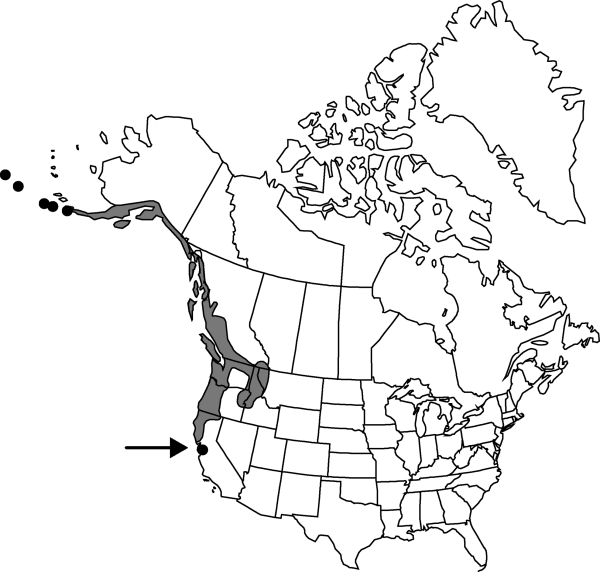Claytonia sibirica
Sp. Pl. 1: 204. 1753.
Common names: Candy flower
Synonyms: Montia sibirica (Linnaeus) Howell Montia sibirica var. bulbifera (A. Gray) B. L. Robinson Montia sibirica var. heterophylla (Torrey & A. Gray) B. L. Robinson
Plants annual or perennial, rhizomatous, producing bulblets or stolons; periderm absent. Stems 5–40 cm. Leaves: basal leaves petiolate, 3–20 cm, blade linear, lanceolate, or deltate, 2–7 × 1–5 cm; cauline leaves sessile, distinct, blade lanceolate to ovate, 1–5 cm. Inflorescences multibracteate; bracts leaflike, 5–30 mm. Flowers 8–20 mm diam., sepals 3–5 mm; petals white, candy-striped, or pink, 8–14 mm; ovules 3. Seeds (1–)3, 2–3 mm, shiny and smooth; elaiosome 1 mm. 2n = 12, 24, 36.
Phenology: Flowering Feb–Aug.
Habitat: Thickets of red alder, dogwood, vine-leaf maple, moist shaded coniferous forests
Elevation: 0-2000 m
Distribution

B.C., Alaska, Calif., Idaho, Mont., Oreg., Wash., Eurasia (Russia).
Discussion
Selected References
None.
Lower Taxa
None.